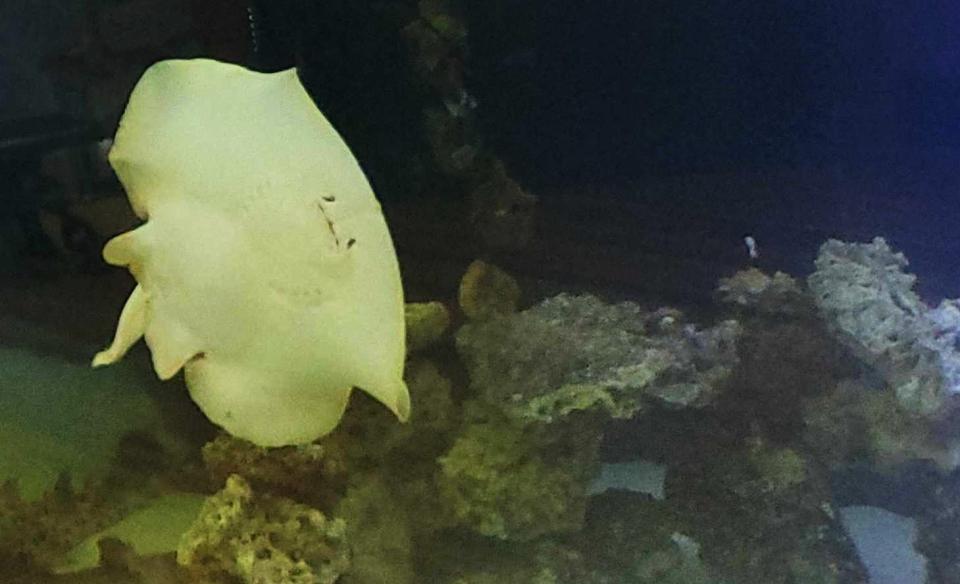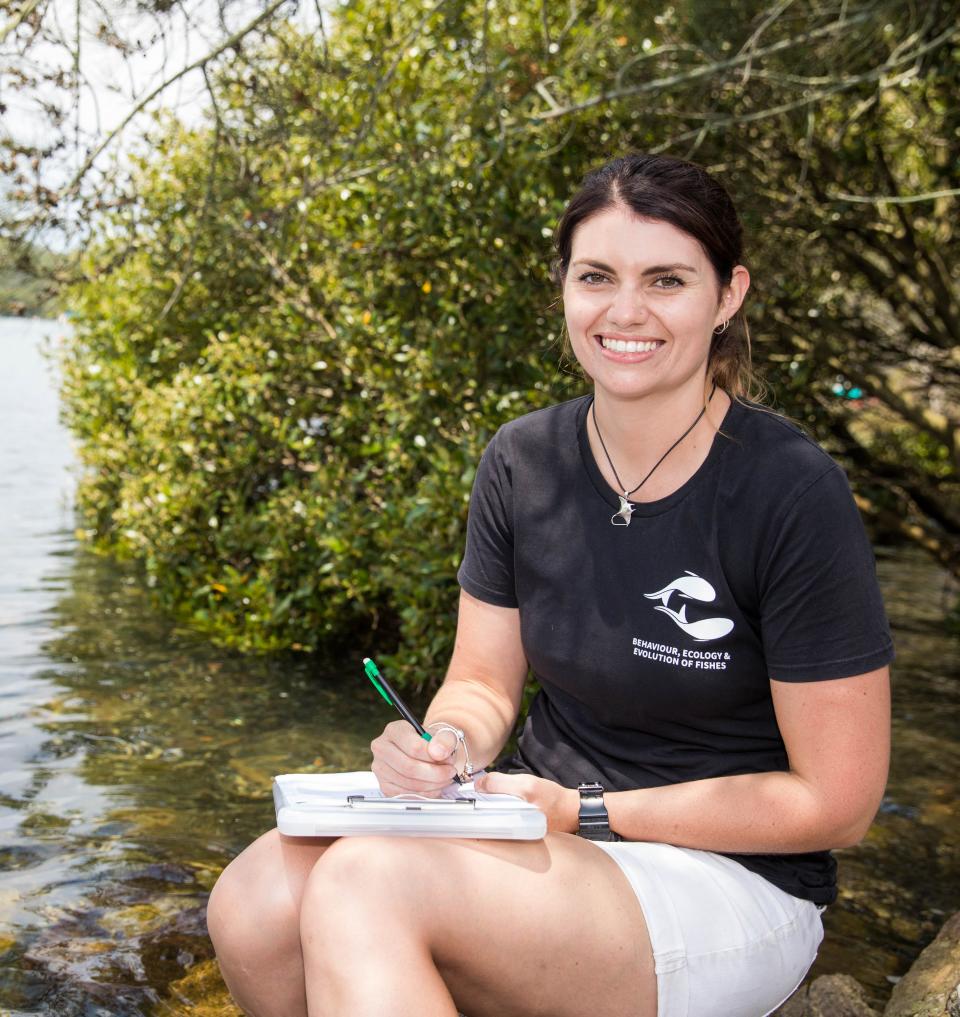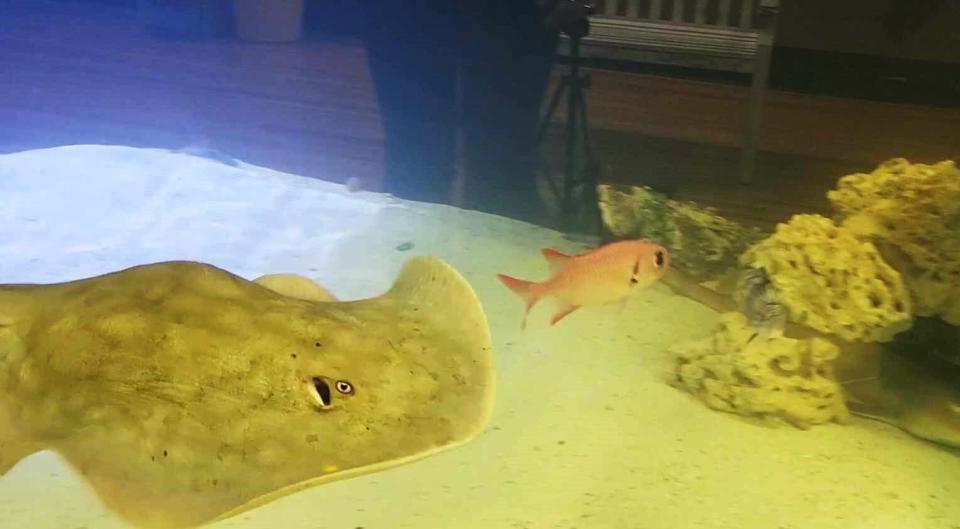Answer Man: Why did Charlotte get herself pregnant? 'Mother of Rays' provides insight
Today's question is about Hendersonville's celebrity stingray, Charlotte, who lives at the Aquarium and Shark Lab by Team ECCO on Main Street in Hendersonville. We know when, where and how Charlotte got pregnant, but the next question is why.
Do you have a question for Answer Man or Answer Woman? Email Executive Editor Karen Chávez at KChavez@citizentimes.com and your question could appear in an upcoming column.
Question: Charlotte has been at the aquarium since 2016, and all that time, there have been no other male stingrays in the tank with her. So why has she waited so long to get herself pregnant through parthenogenesis?

Answer: Growing up in the mountains of Western North Carolina, I'm certainly no expert on marine life and especially stingrays, so I did some digging and found someone who is: Joni Pini-Fitzsimmons, Ph.D., known to her social media followers as "Mother of Rays." She's a marine scientist and researcher at Charles Darwin University in Australia, and her primary focus of research is on stingrays and sharks.
More: When will Charlotte the stingray give 'miraculous' birth? People worldwide want to know
More: Hendersonville stingray could be 1st in its species to be pregnant through parthenogenesis
My hunch was Charlotte's age was the key factor. Staff at the Hendersonville aquarium estimate Charlotte is between 12-14 years old, and the life expectancy in round rays is 14 years, according to National Geographic. Many articles say animals reproduce through parthenogenesis — a process where cells will split inside of the female's eggs and create an embryo, which is basically a clone of the mother — as a last-ditch effort to pass on the mother's genes to the next generation.

I figured that was the case with Charlotte, but Pini-Fitzsimmons told me in an email on Feb. 29 that there really isn't a definite answer.
"We still don't fully understand why parthenogenesis happens or how widespread it is in the wild," she said. "We have seen this phenomenon occur multiple times in rays and sharks in captivity, and it has only once been documented in the wild. It's simply easier for us to observe in a tank, because when a female ray suddenly looks pregnant after being alone for multiple years, people tend to notice."

Pini-Fitzsimmons said in her research of rays in Australia, asexual reproduction in species there appears to be driven by the absence of males in most cases.
"At some stage, biology seems to take over to ensure that the mother's genes are passed onto the next generation, rather than foregoing reproduction entirely. Although, undergoing parthenogenesis doesn't necessarily mean it's a last resort or that the ray is at the end of her life," she said. "It's just one of nature's ways of ensuring genetic diversity and reproductive success. It may be a very important capability in rays, which are experiencing population declines worldwide."
While there have been documented cases of parthenogenesis in species of Australian stingrays, Kady Lyons, a research scientist at the Georgia Aquarium in Atlanta, told the Associated Press in a Feb. 13 article that Charlotte’s pregnancy is the only documented case scientists are aware of in which her species — a round stingray — has gotten pregnant through parthenogenesis.
While the question of why Charlotte got herself pregnant isn't definite, another question on everyone's minds is still tough to answer: When will she give birth? Staff noticed a bump on Charlotte in September, so it's now been just over five months ago. Pini-Fitzsimmons believes it will be very soon.
"Not much is known about the gestation period for round rays, but they are thought to pup up to twice a year, which is quite frequent for a ray, so it would be less than six months, I'd say," she said.
Dean Hensley is the news editor for the Hendersonville Times-News. Email him with tips, questions and comments at DHensley@gannett.com. Please help support this kind of local journalism with a subscription to the Hendersonville Times-News.
This article originally appeared on Hendersonville Times-News: Answer Man: Stingray expert tells why Charlotte got herself pregnant

